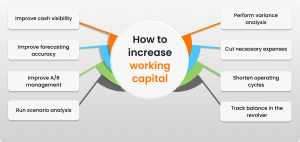You receive an SMS saying that you are eligible for a pre-approved personal loan. It sounds like a done deal. After all, pre-approved should mean guaranteed approval. But that is not always the case. While these offers are based on your financial profile, some factors can still lead to rejection.
Lenders conduct final checks before disbursing the loan. So, any red flag can alter the outcome. Understanding those reasons can help you avoid unexpected surprises and make the most of your pre-approved offer.
About pre-approved personal loans
A pre-approved personal loan is an offer extended by a lender to specific customers based on their past financial behaviour. This means that your credit score, repayment history and income patterns have already been reviewed. And based on this, the lenders consider you eligible for a loan, without you having to apply first.
Since the initial screening is done in advance, these loans are usually processed faster. They require minimal paperwork and often come with better interest rates. However, pre-approval doesn’t mean guaranteed disbursal. The lender still runs final checks and if anything doesn’t meet their criteria, the loan can be rejected.
Pre-approved personal loan rejection: A guide to the reasons
Here’s a breakdown of the key reasons why a pre-approved personal loan might be rejected:
Drop in credit score
Your credit score plays a crucial role in loan approvals. If your score drops between receiving the pre-approval and applying for the loan, lenders may reconsider their decision. It could be due to missed payments or increased debt.
Unstable employment or income changes
Lenders look for a stable income source when approving loans. If you’ve switched jobs recently, lost employment or had a dip in income, your eligibility could be affected. A sudden change in financial stability raises red flags for lenders.
High debt-to-income ratio
Even if you have a good credit score, a high debt-to-income (DTI) ratio can lead to rejection. This happens when a significant portion of your income is already committed to EMIs and other obligations. Therefore, lenders may hesitate to add another loan to your financial burden.
Discrepancies in documents
Even with pre-approval, lenders require proper documentation. Any mismatch in personal details, incorrect income proof or inconsistencies in KYC documents can lead to rejection. Accuracy and completeness are key when submitting paperwork.
Pre-approval based on outdated data
Lenders issue pre-approvals based on past financial records. If your financial situation has changed since then—such as taking on additional loans or defaulting on payments—the lender may withdraw the offer upon final verification.
Tips to secure a personal loan without rejection
Maintain a healthy credit score
A high score improves approval chances. Pay EMIs and credit card bills on time to avoid dips. Keep credit utilisation under 30% to show financial discipline. Avoid frequent loan applications that can lower your score.
Apply within the pre-approved period
Pre-approved offers are time-sensitive and based on past financial data. Delayed applications may face rejection due to profile changes. Accept the offer while your personal loan eligibility remains intact. Confirm validity before proceeding with the application.
Submit accurate documents
Mismatch in documents can lead to delays or rejection. Ensure KYC details, salary slips, and bank statements are updated. Any discrepancies in income proof may impact approval. Double-check all information before submitting.
Apply with an existing lender
A good track record with a bank increases approval chance. Existing customers may get better terms and faster processing. Lenders trust customers with a history of timely repayments. Check pre-approved offers for hassle-free approval.
Finishing up
Before you apply for a personal loan, evaluate multiple offers if available. Compare interest rates, repayment terms and fees to choose the best option. If you have pre-approved offers, check their validity and ensure your financial profile remains stable before proceeding.
A well-planned application improves approval chances and prevents unnecessary rejections. Keep your credit score strong, maintain a low debt-to-income ratio and submit accurate documents. Take these precautions so that you can secure a personal loan smoothly and manage repayments without financial stress.



